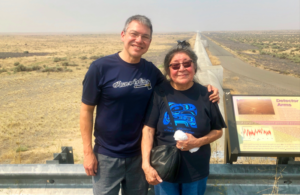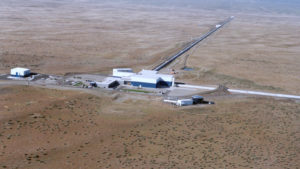Apr
28
Translating Astrophysics
It seems we have had a spate of recent discoveries in astrophysics and cosmology that got some attention in the popular press. The biggest one, of course, was the first image of an actual black hole — highlighted by its surrounding accretion disk, of course. That image became so popular that it was “honored” to be twisted into various fun and clever online memes.
There was also the announcement of the detection of the first neutrinos from one second after the Big Bang:
“If the Big Bang happened, it would have left some telltale signs we can detect today, from our cozy confines here on Earth. It turns out that, over the last century, scientists have found almost all of those signs, one by one….
Neutrinos don’t interact with anything, so they likely would have traveled a few steps ahead of the rest of the universe’s matter as it expanded…. In 2015, researchers from the University of California, Davis detected evidence of those ancient neutrinos in the cosmic microwave background. And in February of this year, an international team detected their evidence in the universe’s baryon acoustic oscillations — a fancy term for the quirks in the universe’s structure caused by the density waves that traveled through that primordial plasma soup after the Big Bang. The effects of neutrinos at the birth of our universe were detected in the cosmic microwave background, and now they’ve been detected in the universe’s overall structure.”
Another one was the detection of the first type of molecule to form (within 100,000 years of the Big Bang):
“The helium hydride ions seen in NGC 7027 were created in the planetary nebula, rather than being leftover from the early universe. But their existence confirms that helium hydride ions can exist outside the lab, which means that theoretical simulations of the primordial cosmos aren’t in serious need of revision.
Adam Perry, who studied helium hydride while at the University of Illinois Urbana-Champaign, likens the new find to unearthing a fossil that fills a missing link in animal evolution. “Everybody knew [helium hydride] had to be out there,” says Perry, who wasn’t involved in the study. But “where before there wasn’t any hard evidence, now there is.… People who do astrochemistry are going to be very excited about this.””
A third noted discovery, announced just a few days ago, was the detection of gravitational waves from another neutron star merger:
“For just the second time, physicists working on the Laser Interferometer Gravitational-Wave Observatory (LIGO) have caught the gravitational waves of two neutron stars colliding to likely form a black hole.
The ripples in space time traveled some 500 million light-years and reached the detectors at LIGO, as well as its Italian sister observatory, Virgo, at around 4 a.m. E.T. on Thursday, April 25. Team members say there’s a more than 99 percent chance that the gravitational waves were created from a binary neutron star merger.
[The first such observation in 2017 of an astronomical event with both light and gravitational waves ushered in] a new era of “multi-messenger astronomy.” The resulting information gave scientists invaluable data on how heavy elements are created, a direct measurement of the expansion of the universe and evidence that gravitational waves travel at the speed of light, among other things.”
These are all amazing discoveries that tell us a lot about the earliest conditions and structure of our universe. Such papers are normally published in English, French, German, Mandarin, and perhaps a few other “mainstream” languages used by researchers and academicians. We laymen are usually informed by popular journals and magazines in those languages, as well. Even in my native English, though, some concepts are not the easiest to follow. I admire science-writers who can “dumb it down” for the rest of us, while (hopefully) remaining accurate and non-hyperbolic.
But, have you ever wondered how these topics might be explained to those who primarily speak, say, Swahili, Inuit, or Catalan?
As it turns out, a lead operator working on CalTech’s LIGO project, Corey Gray, has been working on a side-project with his mother, Sharon Yellowfly, to translate Gray’s work into Blackfoot, a North American indigenous language. When LIGO instruments first detected the ripple of gravitational waves in 2015, Gray (who isn’t quite fluent in his ancestral language) thought,
“[I]t would be freaking cool to get my mom involved and translate this news into Blackfoot. This way she would be a poet for Einstein and astrophysics. A code-talker for gravitational waves.”
When in her 20s, Yellowfly began creating her own Blackfoot dictionary, though she dropped the project when her parents passed away. But, when her son proposed translating that first press release, she was understandably hesitant.
“Yellowfly had just two weeks to translate astrophysical jargon into words that had never before existed. “When Corey emailed me the press release, I opened it, and was like ‘Oh my goodness,’” she says. “‘What is the word for that! What does this mean?” She called relatives for help and asked Gray to explain meatier topics. Right before the announcement deadline, Yellowfly completed a full translation of the press release into Blackfoot, one of the 17 languages it appeared in. The mother-son duo also released a video of Yellowfly reading the release out loud. Since 2015, she has translated five additional press releases on LIGO discoveries.”
Way to go, mom!
How did she do it? Atlas Obscura‘s Sabrina Imbler explains:
“Blackfoot is an agglutinative language, meaning its words are sculpted out of morphemes (linguistics’ smallest building blocks) that can stand on their own, even if removed from the word, according to Eldon Yellowhorn, a professor of First Nations studies at Simon Fraser University. Instead of sentences, Blackfoot relies on long phrases all built around a root word swathed in prefixes and suffixes. For example, the word for “goodbye” in kitakitamatsinopoao, which is comprised of the morphemes that individually translate to “you and I will see each other again.”
Yellowfly deconstructed the press release’s intimidating jargon into four categories. First, she identified traditional words that already exist in Blackfoot, such as naduusi (Sun), gagaduusi (star), and spuu?ts (universe). Second, she noted words that could be directly translated by combining traditional words. For example, “black holes” becomes sigooxgiya — a merger of the Blackfoot words for “black” and “holes.” Similarly, “binary black holes” becomes nadugisstsii sigooxgiya. This approach is similar to how Blackfoot linguists have coined other new words, Yellowhorn says, such as miiksskimmapi, the word for “robot,” which translates to “iron man.”
(In order to indicate sounds and inflections unique to Blackfoot, Yellowfly peppers her translation with symbols and capitalization defined by a key in the press release. For example, “?” indicates a glottal stop, or a consonant produced by obstructing airflow in the vocal tract. In English, we pronounce the word “button” with a glottal stop, skipping over the “o.” Yellowfly also capitalizes “A” to indicate when the vowel should be pronounced like it sounds in “acorn.”)
The other two categories required more careful consideration. Yellowfly grouped together conceptual words that require a deeper understanding of physics for proper translation. Take the interferometer, an instrument that splits a beam of light in two to create a measurable interference pattern, and is how observatories such as LIGO detect gravitational waves. There is nothing in Blackfoot remotely close to this, so Yellowfly created a new word inspired by what the instrument actually does. She landed on Anatsiwayagidutsim gii idumuya issxgwibiists, which translates to “light-splitter and marry/union measurements.”
In a way, Yellowfly’s conceptual translation makes it easier for someone unfamiliar with an interferometer to grasp what it does. She translated “gamma rays” — radiation emitted from the decay of atomic nuclei — into igaguu esstuumsKuutsp aanatsiists AsAxgaasimya, or “many provisions of self-strengthened lights exploding.” “Gravitational waves,” on the other hand, became Abuduuxbiisii o?bigimskAAsts, or “they stick together waves.”
The final and most challenging category in Yellowfly’s system concerns words or phrases that require an additional layer of certain poetic license. “There were words that would take four or five pages to explain,” she says. The most prominent challenge, of course, was how to translate “Einstein’s theory of relativity.” Yellowfly knew she only had to translate the phrase, not the theory itself. She chose bisaatsinsiimaan, or “beautiful plantings.” Bisaatsinsiimaan does not translate in any direct way to the theory itself, but rather acts as a metaphor for Einstein’s legacy. “This was a brilliant man who had this theory that hadn’t been proven,” Yellowfly explains. “The plantings of his ideas would be harvested by people later on, on so many different levels.””
Pretty cool, eh?
Rather than use the official writing system of a published Blackfoot dictionary (by Frantz & Russell), she customized her own system, “work[ing] phonetically to preserve the local inflections of what she calls her own “accent” of Blackfoot.” The work also inspired her to go back and complete her own Blackfoot dictionary.
I thought this was a pretty neat project, including the fact that it is a mother-son collaboration. I imagine many of the same challenges are encountered by Wycliffe and others who try to translate the Bible and theological concepts from it into lesser-known/used languages, especially when the cultural worldviews are so different.
You might be wondering if any other efforts have been made to communicate the wonders of gravitational waves and the like to the Blackfoot people….
“Since the first astrophysics translation, Gray and Yellowfly have worked together to spread awareness of gravitational wave astronomy to Blackfoot speakers, and introduce members of the scientific community to them. Gray helped organize a [gravitational-wave–themed] Blackfoot grass dance competition at the tribe’s annual pow wow [see pic] before rushing home to monitor the first “triple” detection of a binary neutron star. A few years back, the two co-presented their results at an indigenous language symposium at the University of Lethbridge, which is located in Blackfoot territory. Relatives from their tribe came out to hear them speak.”
That’s all I wanted to share on this. I found it intriguing both from the science end and because of my interest in Bible translations (though I usually stick to the English myself). Hope you found it interesting, too.



















